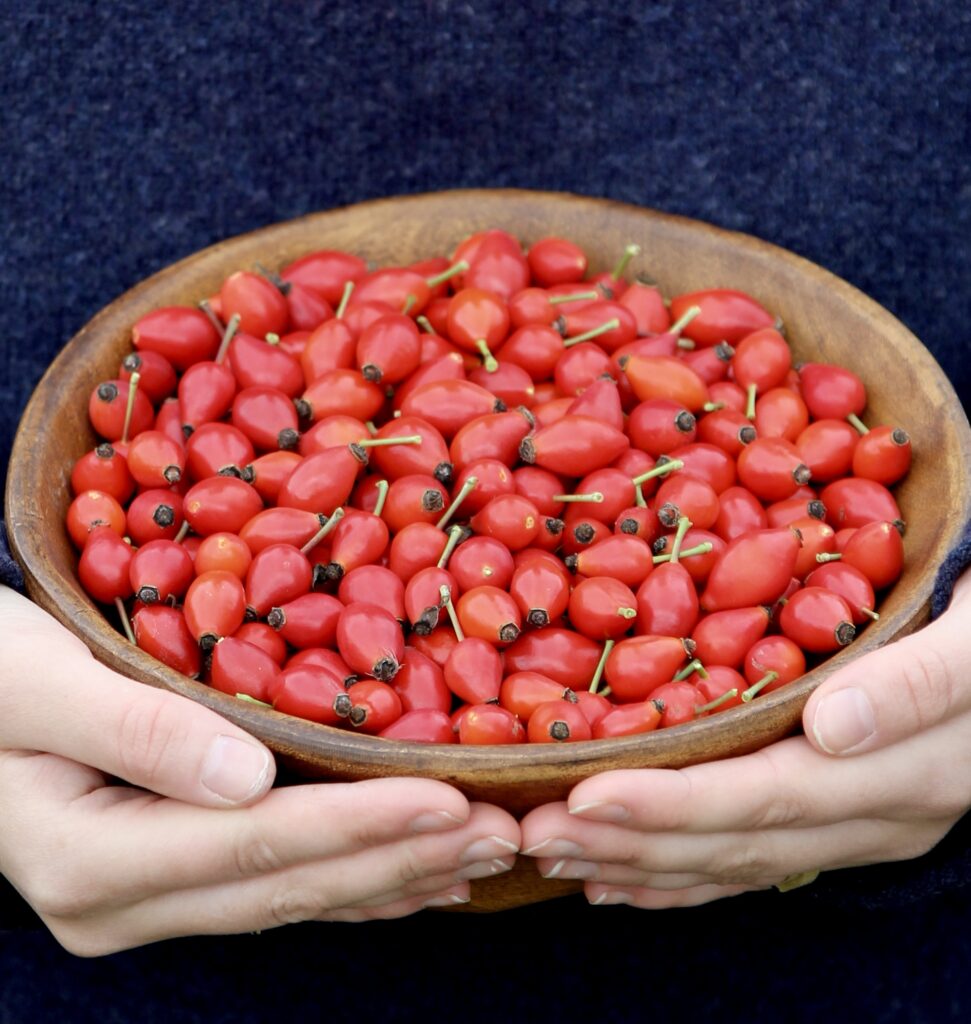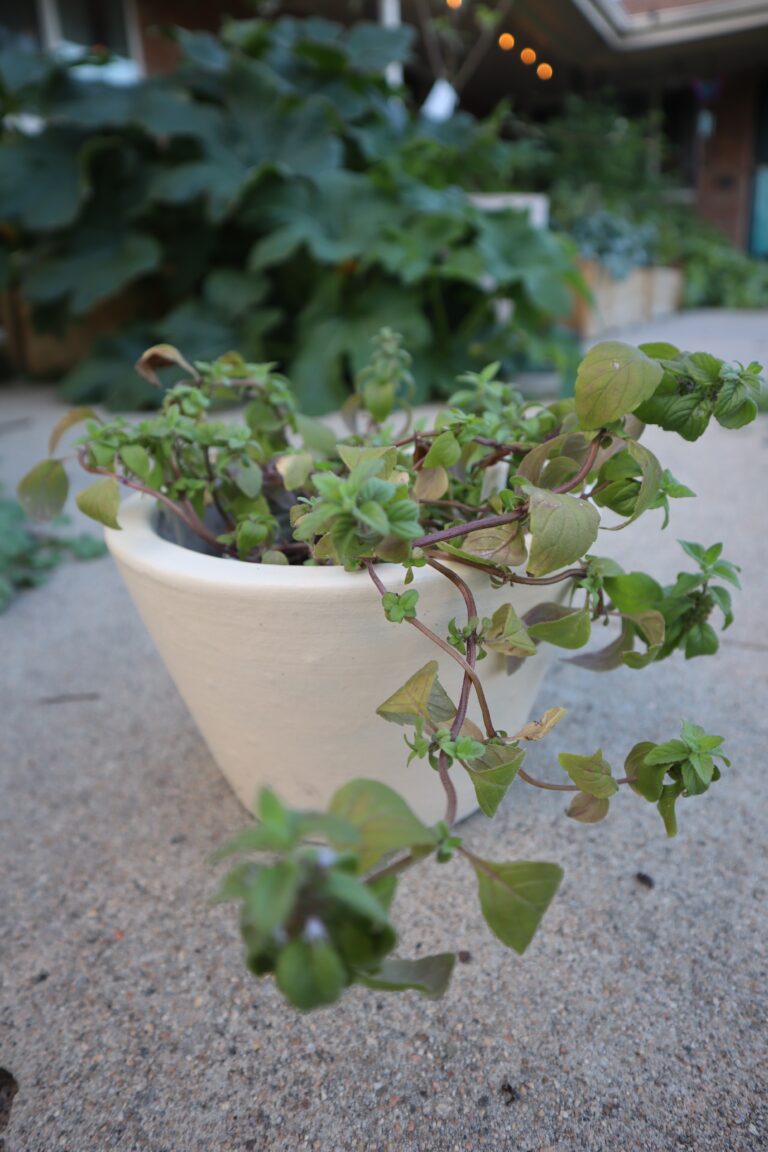How to Forage and Use Rose Hips
Roses are a part of the family Rosaceae, which is a large family of plants that include roses, apples, pears and many more. The rose hip is the seed pod of a single rose. The red outer flesh protects a pocket of seeds and tastes slightly floral, sweet, and tart.
The rose hip has been used since ancient times by the Greeks, Romans, Persians, and Chinese as a medicine, as the rose hip contains one of the highest concentrations of vitamin C in any plant and is a powerhouse for natural remedies and skincare!

Rose Hip Benefits
Rose hips are full of many beneficial vitamins and nutrients including vitamins, A, E, B3, C and K and contain Zinc, Copper and Magnesium as well. They have been used to fight infection and ailments including arthritis and inflammation, bladder infections, kidney stones, hypertension, and more.
The rose hip is also very beneficial for your skin! Because of their high vitamin C content, rose hips can help repair sun damage and keep your skin hydrated. They can also help prevent acne! Overall, rose hips are just a wonderful thing to have around for the health of your skin and body.

How to Forage Rose Hips
Luckily, rose hips are common and very easy to identify. Rose hips are very easy to spot out in nature, because of their beautiful vibrant red color, but there are a couple things you can look for to be sure you have found the right thing. Luckily, all rose hips are edible!
- Identifying Rose Hips
As mentioned, rose hips are a vibrant red/orange color, are round or oblong depending on the type of rose, and have wispy black hairs that are on the end of the hip. If you cut them open, you will see a bunch of tan seeds surrounded by a hair like substance. Some roses, like the Beach Rose (Rosa rugosa) produce a lovely round fat rose hip, while some are more Oblong like the Dog Rose (Rosa canina), which is what I foraged. The Dog Rose is said to be the best tasting and are the type of rose hips that have been used throughout history in old medicinal recipes and the like.
- When to Harvest Rose Hips
The best time to harvest rose hips is in the fall. You can wait till there has been one frost to harvest your hips, which can improve the flavor, but it isn’t necessary. You want to look for rose hips that are firm and a vibrant red/orangish color. Here in the midwest, I have found that the perfect time to harvest them is from mid to late October, but you can definitely harvest them later if the fruit still looks good.

How to Use Rose Hips
I mostly use my foraged rose hips in two ways. One is infusing a carrier oil with them and the other is drying them for tea and other medicinal uses.
How to Dry Rose Hips
- How to Use Your Oven
Turn on your oven to its lowest setting possible, I use the warm function. Place clean and destemmed rose hips on a lined baking sheet and place in your oven. Prop the oven door open with a wooden spoon and keep them in there till they are dry and brittle. This could take anywhere from 6-8 hours. Don’t be tempted to crank the heat up to make them dry faster, just trust the process. Let cool and store in an airtight container
- How to Use a Dehydrator
Place clean and destemmed rose hips on your dehydrator trays and dehydrate them at 100-150 degrees fahrenheit until fully dry. This can take around 6-8 hrs. Store in an airtight container
- How to Air Dry Rose hips
Place clean and destemmed rose hips on a tray and put them outside in the sun, or in a sunny window. Take them in at night if not fully dry in one day. It can be good to cut up your hips so that they dry quicker. Store in an airtight container.
Storing Rose Hips
You can store your rose hips whole or crushed in an airtight container. I favor crushing my dried hips, because they take up less space, and you can sift out the itchy hairs that surround the seeds. All you need to do is crush open your rose hips, put the crushed bits in a fine mesh sieve and shake out the hairs over a bowl. this is a super effective method, and gets rid of the “itching powder”. Be careful disposing of the hairs, as they live up to their name.

How to Make Rose Hip Tea
You’ll Need:
- 8 oz hot water
- 1 Tbsp Dried Rose Hips
- 1 tsp Honey (optional)
Place dried rose hips in a tea infuser or tea bag and cover with hot water. Infuse for 5-10 minutes or until you like the flavor. Sweeten with honey and enjoy!

How to Make Rose Hip Oil
Rose hip oil is very easy to make and is perfect for adding to balms or simply using directly on your skin.
What you’ll need:
- ½ cup Rose Hips. Crushed/chopped, fresh or dry
- 1 cup Carrier oil (Jojoba, Almond, or Coconut. It’s up to your preference)
- An oven safe vessel with a lid.
- Mortar and pestle (or something to crush to hips and their seeds)
- Cheese cloth
How to Make the Oil:
- Cut off the stems and black ends of your rose hips
- Depending on if you’re using fresh or dried rose hips, crush or chop them, making sure most of the seeds get broken open. If you’re using fresh rose hips, use ¾ of a cup of rose hips.
- Place the rose hips in an oven proof vessel and cover with carrier oil.
- Put the lid on your vessel and place in the oven on its lowest setting for 6-8 hours. You want to infuse the oil, not cook the hips.
- Turn off the oven and let the oil cool slowly and completely in the oven.
- Strain using cheese cloth and store in jars or bottles in a cool dark place.
Foraging and using rose hips is so easy and is so beneficial and we hope you get the chance to try it this season. Happy foraging!
More Resources:
- Our Guide, The Basics Of Foraged Food
- Wild Remedies: How to Forage Healing Foods and Craft Your Own Herbal Medicine, by Rosalee de la Forêt and Emily Han
- Midwest Foraging Guide, by Lisa M. Rose
*This is not professional medical advice and we are not doctors. Please use your own discretion when foraging and consuming plants you have found. It is at your own risk.







